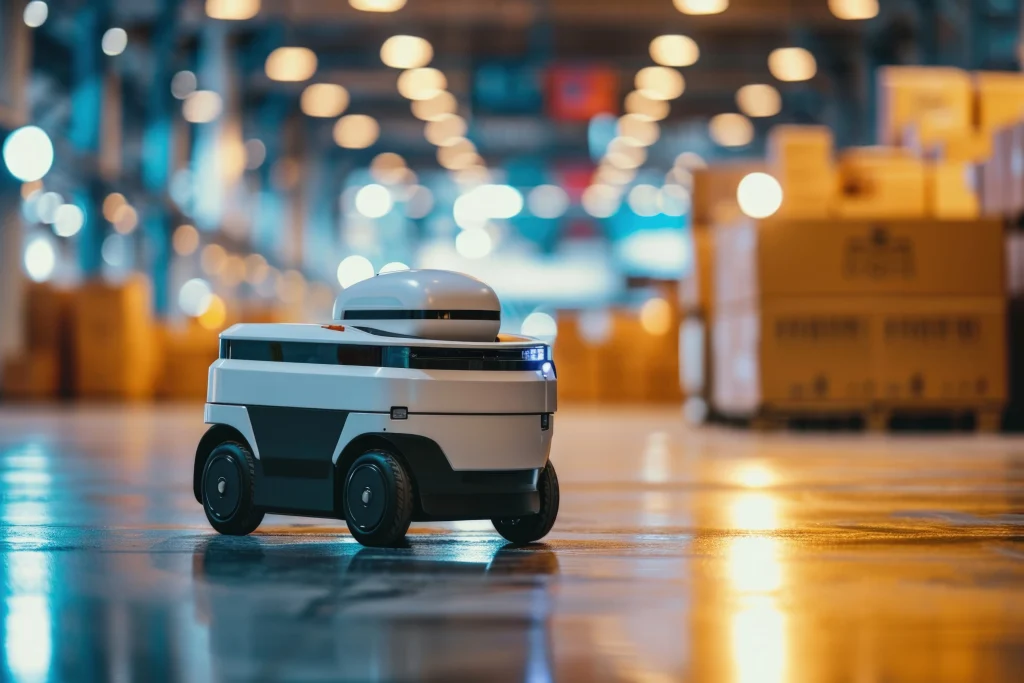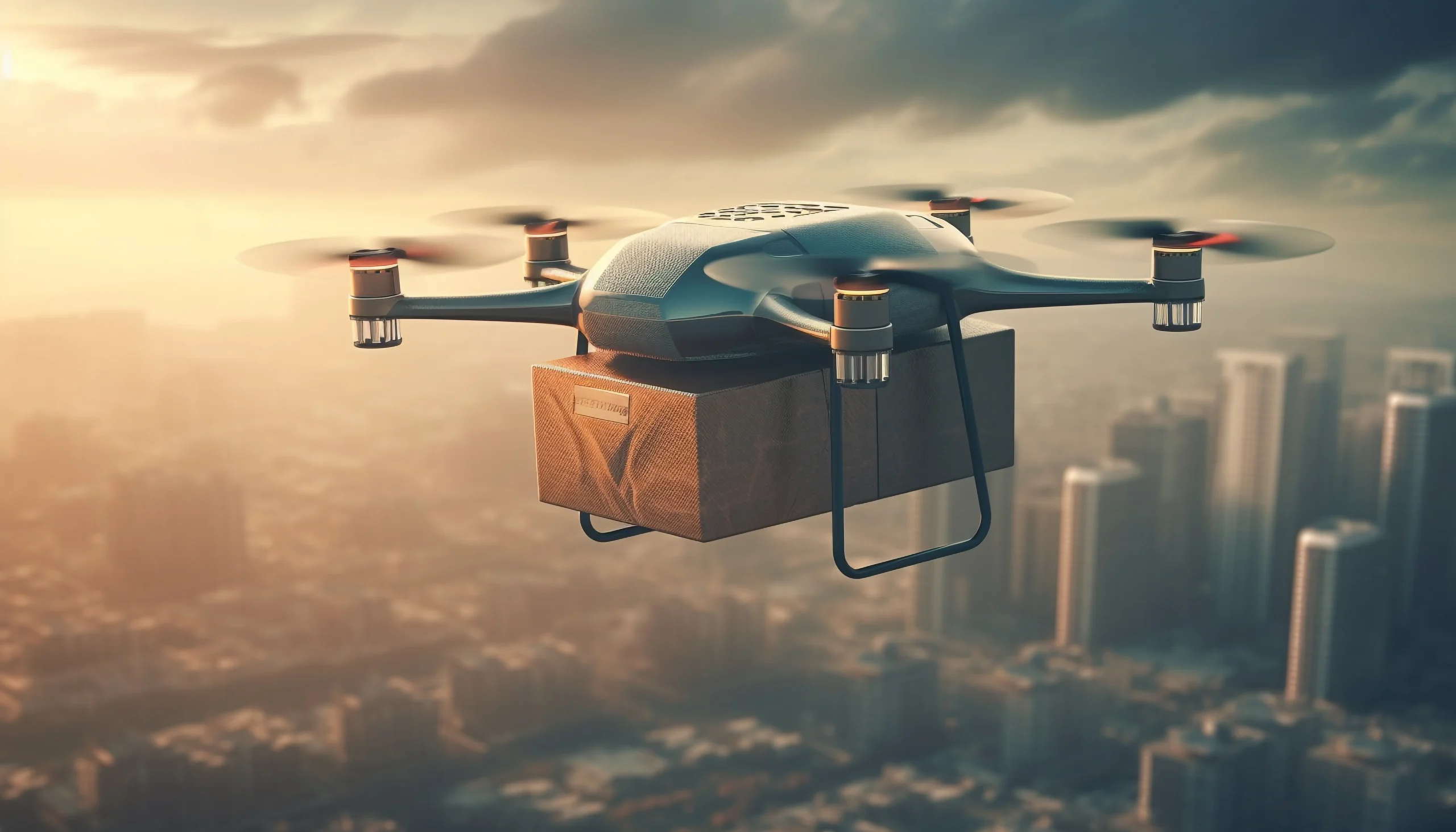The Future of Warehouse Management: Integrating AI and IoT
Warehouse management has evolved significantly over the years. From manual logs and basic software, we are now entering an era where artificial intelligence (AI) and the Internet of Things (IoT) are transforming the industry. This article will explore how these technologies are shaping the future of warehouse management, making it smarter, faster, and more efficient.
What is AI and IoT in Warehouse Management?
To understand how AI and IoT are impacting warehouse management, it’s important to first know what these technologies are.
AI refers to the simulation of human intelligence by machines. It enables systems to learn, reason, and make decisions. In a warehouse, AI can analyze large amounts of data to improve decision-making, predict trends, and automate repetitive tasks.
IoT refers to the network of interconnected devices that communicate and exchange data. In a warehouse, IoT devices can include sensors, RFID tags, cameras, and other smart equipment. These devices collect real-time data, providing insights that help optimize operations.
The Role of AI in Warehouse Management
AI is transforming warehouse management in several ways. Here’s how:
1. Predictive Analytics in Future of Warehouse Management
One of the most powerful applications of AI is predictive analytics. AI algorithms can analyze historical data to forecast demand, identify trends, and optimize inventory levels.
For example, consider a warehouse that stores seasonal products. AI can analyze past sales data and predict when certain items will be in high demand. This allows the warehouse to stock up on the right products at the right time, reducing the risk of stockouts or overstock.
Real-World Example: Amazon uses AI for predictive analytics. Their systems analyze customer behavior and past purchases to predict what customers are likely to buy next. This allows Amazon to stock products in warehouses close to where they are needed, reducing delivery times and costs.
2. Automated Decision-Making
AI enables automated decision-making in warehouses. For instance, AI can determine the best way to organize inventory, the most efficient picking routes, or when to reorder stock.
This reduces the need for human intervention, speeding up processes and reducing errors. AI-driven decision-making also helps warehouses adapt to changes quickly, such as sudden spikes in demand or supply chain disruptions.
Real-World Example: JD.com, a Chinese e-commerce giant, uses AI-powered robots to automate decision-making in its warehouses. These robots can sort and move items without human assistance, significantly speeding up order fulfillment.
3. Robotics and Automation
AI is the brain behind many warehouse robots. These robots can perform tasks such as picking, packing, and sorting with incredible speed and accuracy.
Robots equipped with AI can learn from their environment and improve their performance over time. They can also work alongside human workers, handling repetitive or dangerous tasks, allowing humans to focus on more complex activities.
Real-World Example: Ocado, a UK-based online grocery retailer, uses AI-powered robots in its warehouses. These robots can pick items 50% faster than humans and operate 24/7, increasing efficiency and reducing costs.
The Role of IoT in Warehouse Management
While AI provides the intelligence, IoT provides the data. IoT devices collect and transmit real-time information, giving warehouse managers a clear view of operations. Here’s how IoT is changing warehouse management:
1. Real-Time Inventory Tracking
IoT devices such as RFID tags and sensors allow warehouses to track inventory in real-time. This provides accurate data on stock levels, location, and movement.
With real-time tracking, warehouses can reduce the risk of lost or misplaced items. It also allows for faster order processing, as workers can quickly locate items within the warehouse.
Real-World Example: Walmart uses IoT technology for real-time inventory tracking. Their stores and warehouses are equipped with RFID tags, which provide real-time data on product location and stock levels. This helps Walmart keep its shelves stocked and reduces the risk of stockouts.
2. Temperature and Condition Monitoring
For warehouses that store perishable goods, temperature and condition monitoring are crucial. IoT sensors can monitor temperature, humidity, and other conditions in real-time. If any parameter goes out of the safe range, the system can trigger alerts or even adjust conditions automatically.
This ensures that products are stored in optimal conditions, reducing the risk of spoilage and waste.
Real-World Example: DHL uses IoT sensors to monitor the condition of sensitive goods in its warehouses. These sensors track temperature, humidity, and light exposure. If conditions change, the system alerts warehouse managers, allowing them to take corrective action immediately.
3. Predictive Maintenance
IoT devices can also be used for predictive maintenance of warehouse equipment. Sensors on machinery can monitor performance and detect signs of wear and tear.
By analyzing this data, AI can predict when equipment is likely to fail and schedule maintenance before a breakdown occurs. This reduces downtime and extends the lifespan of equipment.
Real-World Example: Caterpillar, a leading manufacturer of construction equipment, uses IoT sensors on its machinery to monitor performance. The data collected is analyzed to predict maintenance needs, helping to reduce equipment downtime in their warehouses.
Understand deeper The Role of Technology in Modern Warehouse Management
Benefits of Integrating AI and IoT in Warehouse Management
Integrating AI and IoT offers several benefits that are transforming the way warehouses operate:
1. Increased Efficiency
AI and IoT together streamline warehouse operations. By automating processes, optimizing inventory management, and enabling real-time tracking, warehouses can operate more efficiently. This leads to faster order fulfillment, reduced errors, and lower operational costs.
2. Enhanced Accuracy
The combination of AI and IoT reduces human error in warehouse operations. Real-time data and automated decision-making ensure that inventory levels are accurate, picking and packing are done correctly, and orders are fulfilled on time.
3. Better Decision-Making
AI’s ability to analyze large amounts of data helps warehouse managers make informed decisions. Whether it’s forecasting demand, optimizing inventory levels, or scheduling maintenance, AI provides insights that lead to better outcomes.
4. Improved Safety
AI-powered robots and IoT devices can take over dangerous or repetitive tasks, reducing the risk of injury to human workers. Additionally, IoT sensors can monitor environmental conditions, ensuring that warehouses are safe for both workers and stored goods.
5. Cost Savings
While the initial investment in AI and IoT may be significant, the long-term savings are substantial. Increased efficiency, reduced errors, and lower maintenance costs all contribute to a healthier bottom line.
Challenges and Considerations in Future of Warehouse Management
While the benefits are clear, integrating AI and IoT in warehouse management does come with challenges:
1. High Initial Investment
The cost of implementing AI and IoT technologies can be high. This includes the cost of equipment, software, and training. However, the long-term benefits often outweigh these initial costs.
2. Data Security
With the increased use of IoT devices comes the challenge of data security. Warehouses must ensure that the data collected by IoT devices is protected from cyber threats. This requires robust security measures and constant monitoring.
Read on Cybersecurity: Best Practices & Tips
3. Skilled Workforce
Implementing AI and IoT requires a skilled workforce. Warehouse staff must be trained to use these technologies effectively. Additionally, there is a need for IT professionals who can manage and maintain AI and IoT systems.
4. Integration with Existing Systems
Integrating AI and IoT with existing warehouse management systems can be complex. It may require significant changes to current processes and workflows. Careful planning and a phased approach can help ease this transition.
Why many company go for Cloud-Based WMS, read further

The Future Outlook
The future of warehouse management is undoubtedly intertwined with AI and IoT. As these technologies continue to evolve, their impact on the industry will only grow.
AI and IoT will become even more sophisticated, enabling warehouses to operate with greater precision and efficiency. We can expect to see more autonomous warehouses, where AI-powered robots and IoT devices handle the majority of tasks.
Sustainability will also play a key role in the future of warehouse management. AI and IoT can help warehouses reduce energy consumption, minimize waste, and improve overall sustainability. For example, AI can optimize lighting and heating based on real-time data, while IoT devices can monitor energy use and suggest improvements.
Adapting to the Future
As we look towards the future of warehouse management, integrating AI and IoT is becoming increasingly essential. At 8Stock, we recognize the importance of staying ahead of the curve. Our warehouse management system is designed to adapt to these technological advancements, providing you with the tools you need to stay competitive.
In conclusion, the future of warehouse management is bright, with AI and IoT leading the way. By embracing these technologies, warehouses can achieve new levels of efficiency, accuracy, and safety. And with solutions like 8Stock, you can be sure your warehouse is prepared for whatever the future holds.

